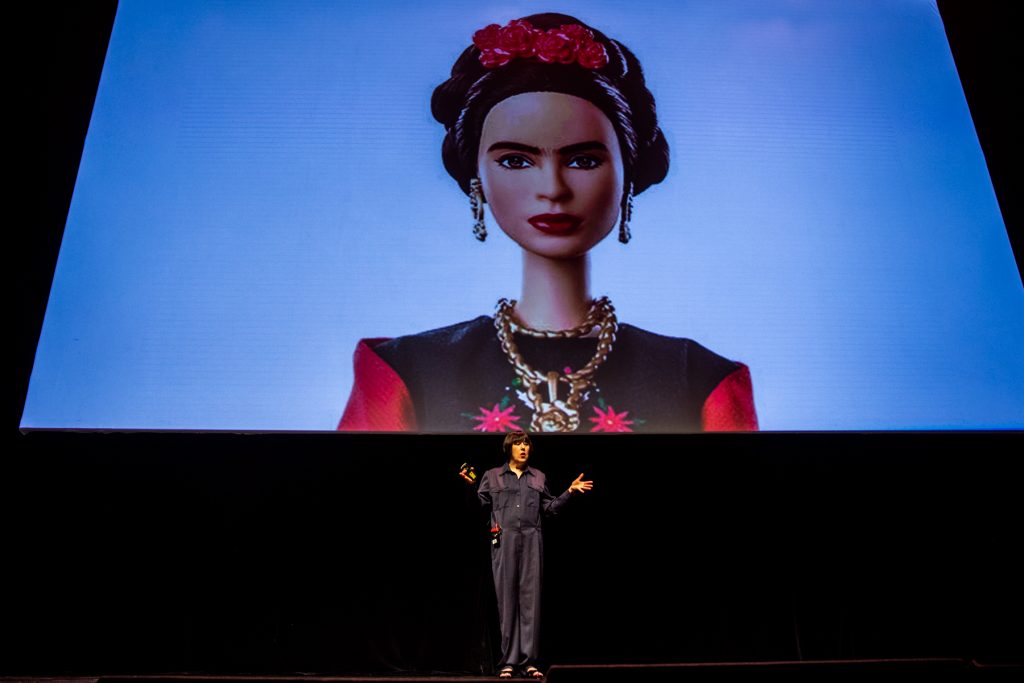Design Indaba 2011: The Conference
World-changing creativity from our five favorite speakers at South Africa’s premier design event

A conference promising “a better world through creativity,” South Africa’s Design Indaba summit fills three days with blue-sky thinking on design as an agent of change. The well-organized event, followed by a thriving design expo, this year also featured a performance by the Watoto Children’s Choir, celebrating the 80th birthday of design mainstay Massimo Vignelli, who sagely reminded the crowd, “If you do good work, you get good work in return.”
While Vignelli’s wisdom neatly sums it up, the conference explored more deeply how design improves life, that questions lead to better design, the ways that passion yields success, and collaboration’s potential to open up new ideas and approaches. While all the speakers intelligently presented their views on creativity, below are the five who made the overall biggest impact.
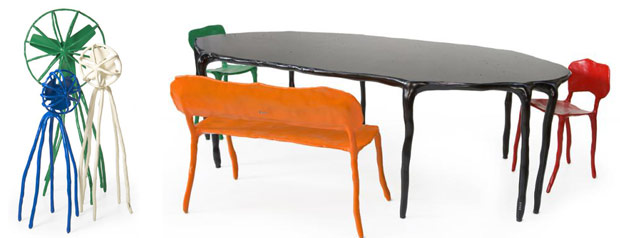
Maarten Baas
Following a retrospective speech by design impresario Alberto Alessi and closing out day two of the conference, award-winning young designer Maarten Baas‘ passionate take on design left the audience many bon mots to consider—”the most beautiful things in life are unexplainable (like love).” Baas started his talk with images of trees in nature, showing the intrinsic elegance of the world. But because our “brains take over common sense,” we end up with “Superman design,” the shiny and overly-styled work that’s dominated recent years. Baas’ highly-regarded Clay Furniture series (above)—each piece sculpted by hand and with tables that can have five legs—embodies this modern-earthy approach.
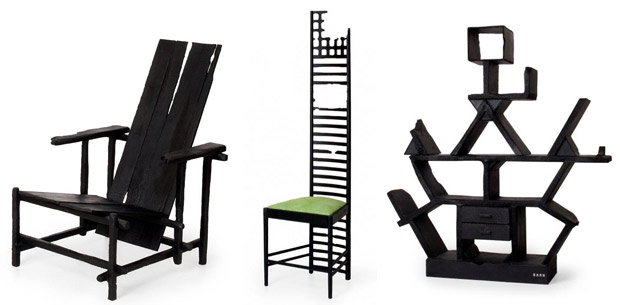
His aesthetic, like many contemporary designers, fuels those pundits determined to define him as either a fine artist or a designer, a conundrum he compares to a tomato. “Is it a fruit or a vegetable?” Baas asks, then answering his own question, explains it is both. Though bewildered by the categorizations, he understands the media’s fascination with his hybrid process. After debuting his Smoke collection (above) he felt people wondered “who is this guy from Holland with his blow torch?” Explaining the paradoxical leap his work requires, Baas commented on his limited edition series for Established & Sons, stating “the sales were even more limited than the edition.”
Karin Fong
Concerned with “making transitions and connections,” Karin Fong designs the “in between space” that bridges reality and fantasy in her film work. As one of the founding members of Imaginary Forces, Fong specializes in creating title sequences for movies and television. The pragmatic creative sees each project as a puzzle, where she must combine the legal information (the credits) with an imaginative opening sequence to ease the audience into the story. “Dead Man on Campus” (above)—which Fong says was a challenge in and of itself as a comedy about suicide—cleverly substituted information on a college exam with the film’s credits.
Fong explains that when creating these compact stories within a larger picture she “knows it’s right when it can’t go in front of any other story or production.” For the HBO show “Boardwalk Empire,” Fong said their first thought was to make an opening concerned with prohibition and the time period during in which the narrative takes place. Realizing that the focus of the series was the character Nucky—no matter who dies or what changes during the show, he always comes back—they redesigned what has become a widely-lauded introduction around him.

Hat-Trick
For a design duo that “likes to keep busy” London-based Hat-Trick seems to have an immense amount of fun doing it. Founded ten years ago by Jim Sutherland and Gareth Howat, Hat-Trick works with a wide range of clients, creating projects of various scale—from postage stamps to campaigns.
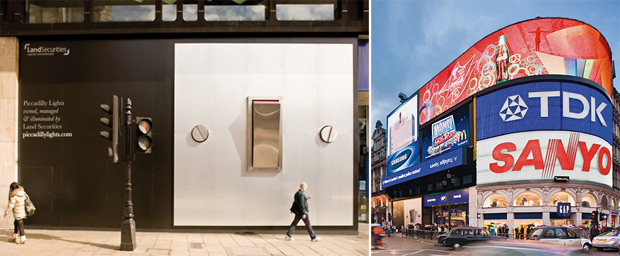
Aptly named Hat-Trick, the small firm applies a clever sensibility, at once playful and diligent, to their work. When commissioned by U.K. commercial property developer Land Securities to create a temporary billboard at residential building Piccadilly Lights, Hat-Trick designed a giant switch that people could physically turn on and off with copy reading “Piccadilly Lights: owned, managed and illuminated by Land Securities.”
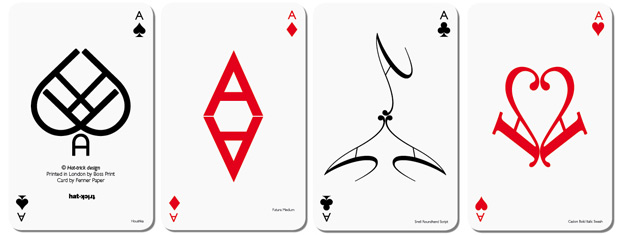
An underlying message from their presentation is they don’t see their craft as work, instead they treat each endeavor as an exciting challenge to flex their creative muscle. For instance, on a recent holiday Sutherland decided he “needed more practice with typography” and gave his hand at designing a deck of playing cards. The resulting set not only cleverly toys with words and images, but reflects the subtle humor of their designs.
Robert Wong
Touching on Baas’ down-to-earth approach, Google Labs‘ creative director Robert Wong started his talk with the fact that he is the exact opposite, even offering an equation for artistic success. S! + Em = Cr means “surprise plus empathy equals creativity.” From “don’t be evil” to “do epic shit!”, Wong’s motivational-speaker pitch kept it moving, sprinkling bits of valuable advice among personal anecdotes. Life-affirming statements like, “the best search results don’t really show up on web pages, they show up in people’s lives,” lent his talk an optimism that the former accountant balanced with practical tactics. One of the key factors they keep in mind at Google, he explained, is knowing “our products are only as good as our browser.” Tapping into the conference’s theme, Wong posited that while no one really knows what a “better world” looks like, if people galvanize their talents we are sure to see a more innovative future.
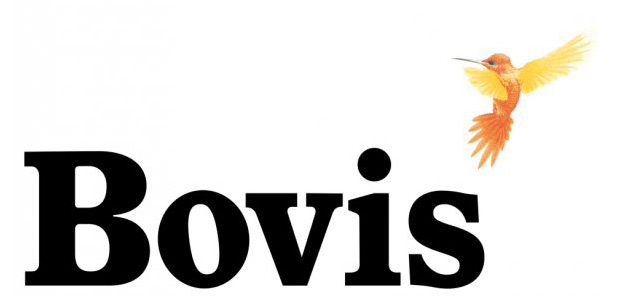
Michael Wolff
Dressed in bright blue Crocs, veteran designer and consultant Michael Wolff opened up the conference with a review of his 46 years in the business. Unsurprisingly, he had an endless flow of scholarly soundbites to compliment his works, which typically include a witty animal in the design. Wolff himself explains he would be a seagull, flying high, having fun and soaring around to scoop up his next meal. The metaphor led to his first bit of advice, “humor is an important part of building relationships.”
Co-founder of the now-massive brand strategy firm Wolff Olins, Wolff is no stranger to creative thinking. His process is to detach the brain from what it already understands—like an engine pulling apart from the train—and begin in the “I don’t know position.” He also warned the audience about hanging on to an idea, saying “Having an idea is a block to having more. If you have an idea, just throw it away. You think you’ll never have another one but you will.”

Wolff explains “sometimes you just have to leave things alone.” Tasked by Lyle’s Golden Syrup to redesign their packaging, Wolff didn’t change a thing. For Shell, he simply bumped up the colors and removed the name—an act that speaks volumes about progress and how our relentless pursuit of it might best play out in coming years.
Sponsored by Design Indaba.

